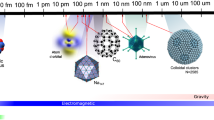Abstract.
Heat can flow from cold to hot at any phase separation even in macroscopic systems. Therefore also Lynden-Bell's famous gravo-thermal catastrophe must be reconsidered. In contrast to traditional canonical Boltzmann-Gibbs statistics this is correctly described only by microcanonical statistics. Systems studied in chemical thermodynamics (ChTh) by using canonical statistics consist of several homogeneous macroscopic phases. Evidently, macroscopic statistics as in chemistry cannot and should not be applied to non-extensive or inhomogeneous systems like nuclei or galaxies. Nuclei are small and inhomogeneous. Multifragmented nuclei are even more inhomogeneous and the fragments even smaller. Phase transitions of first order and especially phase separations therefore cannot be described by a (homogeneous) canonical ensemble. Taking this serious, fascinating perspectives open for statistical nuclear fragmentation as test ground for the basic principles of statistical mechanics, especially of phase transitions, without the use of the thermodynamic limit. Moreover, there is also a lot of similarity between the accessible phase space of fragmenting nuclei and inhomogeneous multistellar systems. This underlines the fundamental significance for statistical physics in general.
Similar content being viewed by others
References
J. Randrup, S.E. Koonin, Nucl. Phys. A 356, 223 (1981).
D.H.E. Gross, Meng Ta-chung, Production mechanism of large fragments in high energy nuclear reactions, in Proceedings of the 4th Nordic Meeting on Intermediate and High Energy Nuclear Physics, Geilo, Norway, Jan 5-9, 1981 (University of Lund, 1981) p. 29.
D.H.E. Gross, Phys. Scr. T 5, 213 (1983).
D.H.E. Gross, Microcanonical thermodynamics: Phase transitions in ``Small'' systems, Lect. Notes Phys., Vol. 66 (World Scientific, Singapore, 2001).
J.P. Bondorf, R. Donangelo, I.N. Mishustin, H. Schulz, K. Sneppen, Nucl. Phys. A 444, 460 (1985).
Ph. Chomaz, F. Gulminelli, Nucl. Phys. A 647, 153 (1999).
Al.H. Raduta, Ad.R. Raduta, Phys. Rev. C 56, 2059 (1997).
A. Le Fevre, M. Ploszajczak, V.D. Toneev, Phys. Rev. C 60, 051602 (1999) http://xxx.lanl.gov/abs/ nucl-th/9901099.
D.H.E. Gross, Thermo-Statistics or Topology of the Microcanonical Entropy Surface, Lect. Notes Phys., Vol. 602 (Springer, 2002) pp. 21--45
C.N. Yang, T.D. Lee, Phys. Rev. 87, 404 (1952).
L. Boltzmann, Sitzungsber. Akad. Wiss. Wien II, 67 (1877).
L. Boltzmann, Wien. Ber. 76, 373 (1877).
E.A. Guggenheim, Thermodynamics, An Advanced Treatment for Chemists and Physicists (North-Holland Personal Library, Amsterdam, 1967).
F. Gulminelli, Ph. Chomaz, V. Duflot, Abnormal kinetic energy fluctuations and critical behaviors in the microcanonical lattice gas model, Caen preprint, LPCC 99-17, 1999.
R. Clausius, Ann. Phys. (Poggendorff) Chem. 79, 368
R. Clausius, Ann. Phys. (Poggendorff) Chem. 93, 481 (1854).
R. Clausius, Ann. Phys. (Poggendorff) Chem. 125, 353 (1865).
I. Prigogine, Thermodynamics of Irreversible Processes (John Wiley & Sons, New York, 1961).
J.E. Kilpatrick, Classical thermostatistics, in Statistical Mechanics, edited by H. Eyring, No. II (Academic Press, New York, 1967) Chapt. 1, pp. 1--52.
D.H.E. Gross, Ensemble probabilistic equilibrium and non-equilibrium thermodynamics without the thermodynamic limit, in PQ-QP: Quantum Probability, White Noise Analysis, edited by Andrei Khrennikov (ACM, World Scientific, Boston, 2001) pp. 131--146.
D.H.E. Gross, Entropy 6, 158 (2004).
R.D. Carlitz, Phys. Rev. D 5, 3231 (1972).
C. Bréchignac, Ph. Cahuzac, F. Carlier, J. Leygnier, J.Ph. Roux, J. Chem. Phys. 102, 1 (1995).
P. Hertz, Ann. Phys. (Leipzig) 33, 537 (1910).
D.H.E. Gross, Nuclear statistics, microcanonical or canonical? the physicists vs. the chemists approach, in Proceedings of the XLIII International Winter Meeting on Nuclear Physics, Bormio, Italy, 2005, edited by I. Iori, A. Bortolotti, Ricerca Scientifica ed Educazione Permanente, Suppl. no. 124 (Milano, 2005) p. 148
D. Lynden-Bell, R. Wood, Mon. Not. R. Astron. Soc. 138, 495 (1968).
D.H.E. Gross, Physica A 340, 76 (2004) cond-mat/ 0311418.
L.G. Moretto, J.B. Elliot, L. Phair, G. J. Wozniak, Phys. Rev. C 66, 041601(R) http://arXiv.org/ abs/nucl-th/0208024.
O. Schapiro, D.H.E. Gross, A. Ecker, Microcanonical Monte Carlo, in Proceedings of the First International Conference on Monte Carlo and Quasi-Monte Carlo Methods in Scientific Computing, Las Vegas, Nevada, 1994, Lect. Notes Statistics, Vol. 106 (Springer, 2005) pp. 346--353.
D.H.E. Gross, M.E. Madjet, Microcanonical vs. canonical thermodynamics, http://xxx.lanl.gov/abs/cond-mat/ 9611192 (1996).
D.H.E. Gross, M.E. Madjet, Cluster fragmentation, a laboratory for thermodynamics and phase-transitions in particular, in Proceedings of Similarities and Differences between Atomic Nuclei and Clusters, Tsukuba, Japan 97, edited by Abe, Arai, Lee, Yabana (The American Institute of Physics, 1997) pp. 203--214.
D.H.E. Gross, Phys. Chem. Chem. Phys. 4, 863 (2002) http://arXiv.org/abs/cond-mat/0201235.
D.H.E. Gross, J.F. Kenney, J. Chem. Phys. 122, 224111 (2005) cond-mat/0503604.
P. Glansdorff, I. Prigogine, Thermodynamic Theory of Structure, Stability and Fluctuations (John Wiley & Sons, London, 1971).
C. Bustamante, J. Liphardt, F. Ritort, Phys. Today 58, 43, July (2005).
C. Jarzynski, Phys. Rev. Lett. 78, 2690 (1997).
D.H.E. Gross, Flaw of Jarzynski's equality when applied to systems with several degrees of freedom, cond-mat/0508721 (2005).
D.H.E. Gross, Reply to Jarzynski's comment cond-mat/0509344, cond-mat/0509648 (2005).
D.H.E. Gross, Phys. World 17, 23, October (2004).
J.E. Finn, Phys. Rev. Lett. 49, 1321 (1982).
F. Gulminelli, Ph. Chomaz, O. Julliet, M.J. Ison, C.O. Dorso, Information theory of open fragmenting systems, lanl.arXiv.org/nucl-th/0511012 (2005).
M. D'Agostino, Phys. Lett. B 473, 219 (2000).
M. D'Agostino, M. Bruno, F. Gulminelli, R. Bougault, F. Cannata, Ph. Chomaz, R. Bougault, F. Gramegna, N. le Neindre, A. Moroni, G. Vannini, Nucl. Phys. A 734, 512 (2004).
M. Pichon, the INDRA and ALADIN Collaborations, Bimodality in binary Au + Au collisions from $60$ to $100$MeV/u, in Proceedings of the XLI Winter Meeting on Nuclear Physics, Bormio, Italy, 2003, edited by I. Iori, A. Moroni, Ricerca Scientifica ed Educazione Permanente, Suppl. no. 120 (Milano, 2003) p. 149.
D.R. Bowman, Phys. Lett. B 189, 282 (1987).
P.H. Chavanis, M. Rieutord, Astron. Astrophys. 412, 1 (2003) http://arXiv.org/abs/astro-ph/0302594.
E.V. Votyakov, H.I. Hidmi, A. De Martino, D.H.E. Gross, Phys. Rev. Lett. 89, 031101 (2002) http:// arXiv.org/abs/cond-mat/0202140.
O. Lopez, D. Lacroix, E. Vient, Bimodality as signal of liquid-gas phase transition in nuclei?, http:// arXiv.org/abs/nucl-th/0504027 (2005).
W. Thirring, Z. Phys. 235, 339 (1970).
Author information
Authors and Affiliations
Corresponding author
Rights and permissions
About this article
Cite this article
Gross, D.H.E. Nuclear multifragmentation, its relation to general physics. Eur. Phys. J. A 30, 293–302 (2006). https://doi.org/10.1140/epja/i2005-10317-6
Received:
Accepted:
Published:
Issue Date:
DOI: https://doi.org/10.1140/epja/i2005-10317-6




